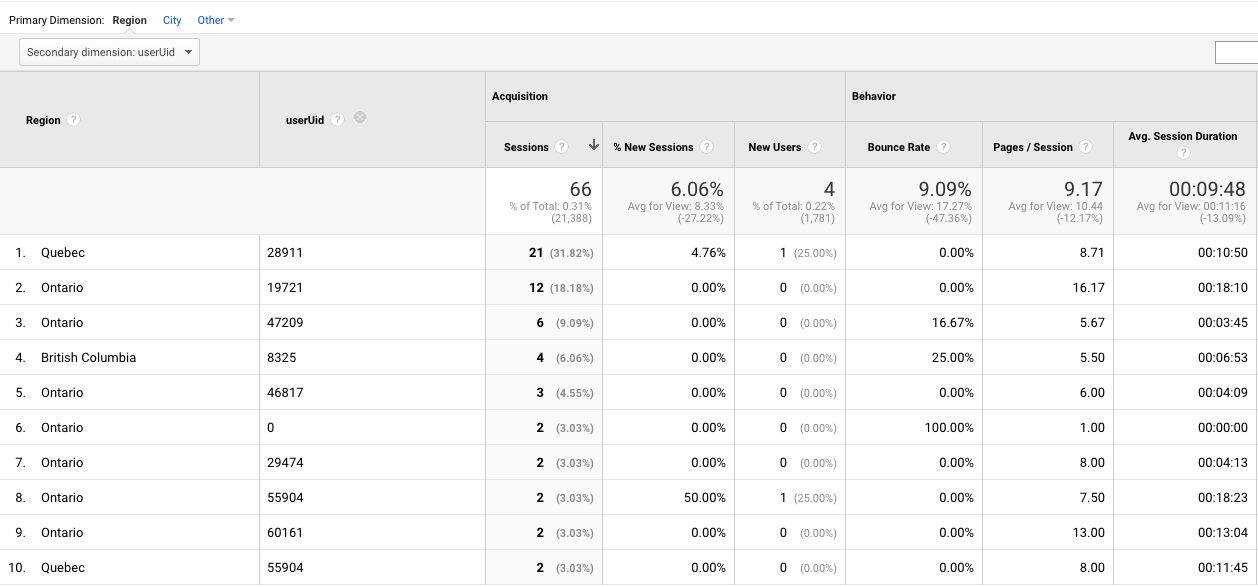Opening the Power of Second Measurement Analytics for Boosted Data Insights and Decision-Making
In the realm of data analytics, primary dimensions typically take the limelight, yet the real deepness of insights exists within the world of secondary dimensions. These added data factors supply a nuanced point of view that can brighten patterns and relationships not conveniently noticeable in the beginning glimpse. By using the power of secondary dimension analytics, organizations can unveil concealed patterns, uncover correlations, and extract extra purposeful verdicts from their data. The potential for improved decision-making through the use of these additional measurements is large, assuring a deeper understanding of complex information sets and leading the way for more educated critical options.
Importance of Secondary Dimensions
Checking out the value of secondary measurements in analytics unveils the hidden layers of information understandings important for educated decision-making in different domains. Secondary measurements supply a much deeper understanding of key information by providing added context and viewpoints. By incorporating secondary dimensions right into analytics, companies can extract a lot more nuanced and comprehensive insights from their datasets.
One secret relevance of secondary dimensions is their ability to section and categorize primary information, permitting an extra comprehensive evaluation of certain parts within a dataset. This division enables companies to identify patterns, trends, and outliers that may not be evident when considering the data as a whole. Second measurements help in discovering relationships and reliances in between different variables, leading to even more accurate forecasting and predictive modeling - secondary dimension.
Additionally, secondary dimensions play a crucial function in boosting information visualization and coverage. By adding secondary measurements to visualizations, such as graphs or charts, analysts can develop extra informative and insightful representations of data, facilitating better interaction of searchings for to stakeholders. In general, the assimilation of additional measurements in analytics is critical in unlocking the full potential of information and driving evidence-based decision-making.
Secret Advantages of Utilizing Additional Dimensions
Using second dimensions in analytics offers companies a strategic benefit by augmenting the deepness and granularity of information insights. By exploring information using second dimensions such as time, location, gadget kind, or individual demographics, organizations can reveal patterns, patterns, and correlations that may or else remain hidden.
Moreover, the utilization of additional dimensions boosts the context in which key data is translated. It provides an extra thorough sight of the partnerships in between various variables, making it possible for organizations to make educated choices based upon a more all natural understanding of their information. Furthermore, additional dimensions assist in the recognition of outliers, abnormalities, and locations for optimization, inevitably bring about extra reliable approaches and enhanced results. By leveraging second dimensions in analytics, companies can harness the complete capacity of their data to drive much better decision-making and accomplish their company objectives.
Advanced Data Analysis Techniques
A deep study sophisticated information evaluation strategies exposes advanced approaches for extracting valuable insights from intricate datasets. One such strategy is artificial intelligence, where algorithms are utilized to determine patterns within data, anticipate results, and make data-driven choices. This technique enables for the automation of analytical design structure, making it possible for the processing of big volumes of data at a much faster rate than standard methods.
One more sophisticated method is anticipating analytics, which makes use of statistical algorithms and device understanding methods to forecast future outcomes based on historic information. By evaluating fads and patterns, services can anticipate customer habits, market fads, and prospective threats, encouraging them to make positive decisions.
Furthermore, message mining and view analysis are useful techniques for extracting understandings from unstructured data sources such as social networks remarks, consumer reviews, and study responses. By examining text data, organizations can understand customer point of special info views, recognize arising trends, and improve their service or products based on feedback.
Enhancing Decision-Making With Secondary Dimensions

Enhancing decision-making with additional dimensions makes it possible for companies to make even more informed and targeted tactical options. As an example, by segmenting client data based upon second measurements like purchasing history or engagement levels, firms can customize their advertising strategies to particular audience segments, bring about boosted conversion rates and customer contentment. Furthermore, secondary dimensions can assist identify correlations and partnerships between various variables, making it possible for organizations to make data-driven choices that drive development and earnings.
Carrying Out Second Dimension Analytics
When integrating secondary measurements in analytics, companies can open deeper insights that drive tactical decision-making and improve total efficiency. This entails recognizing the particular questions the company seeks to respond to and the information factors called for to address them.

Furthermore, companies must leverage advanced analytics devices and technologies to enhance the procedure of integrating secondary measurements. These devices can automate information processing, analysis, and visualization, permitting organizations to focus on analyzing understandings instead than hand-operated data manipulation.
Verdict
Finally, second dimension analytics play an important function in enhancing information insights and decision-making processes. By making use of advanced information evaluation techniques and carrying out site here additional measurements efficiently, organizations can unlock the power of their information to drive calculated company choices. The key benefits of making use of second measurements can not be overemphasized, as they give a deeper understanding of information fads and relationships. It is crucial for companies to leverage additional measurement analytics to remain affordable in today's data-driven landscape.
In the world of information official site analytics, key measurements usually take the spotlight, however the true depth of understandings lies within the realm of additional measurements.Utilizing additional measurements in analytics provides companies a strategic advantage by enhancing the deepness and granularity of information understandings. By leveraging second dimensions in analytics, organizations can harness the full capacity of their information to drive far better decision-making and achieve their company purposes.
Applying data validation processes and normal audits can help keep data quality and dependability.
By making use of advanced information evaluation techniques and executing secondary dimensions properly, organizations can unlock the power of their information to drive critical organization decisions.